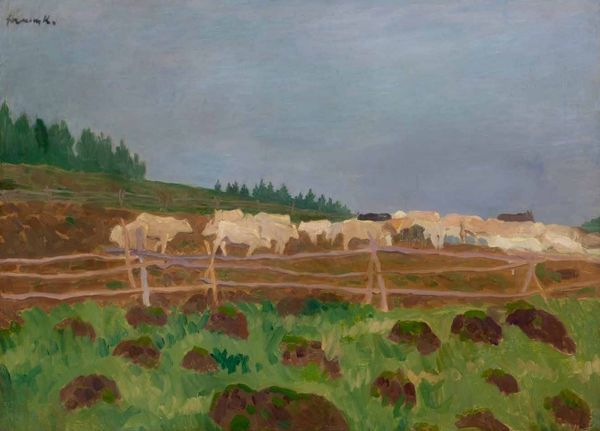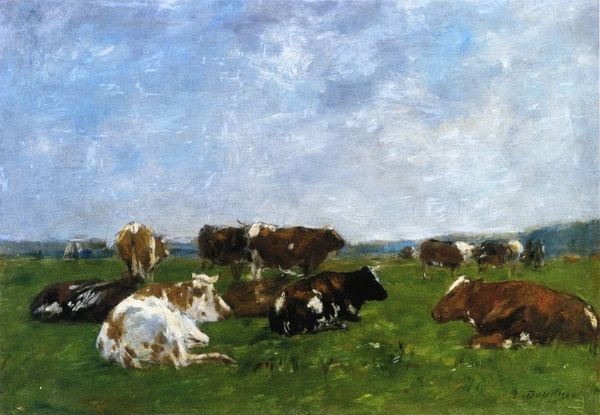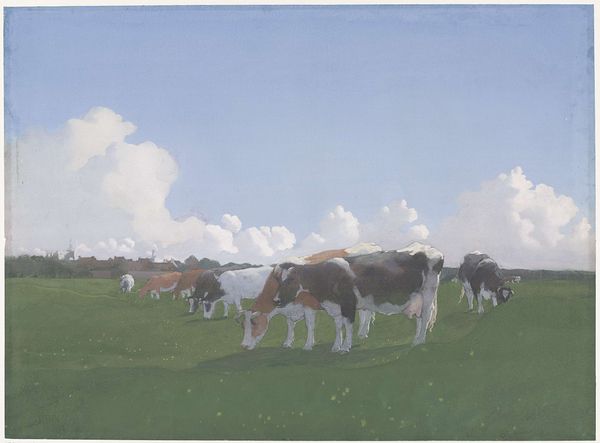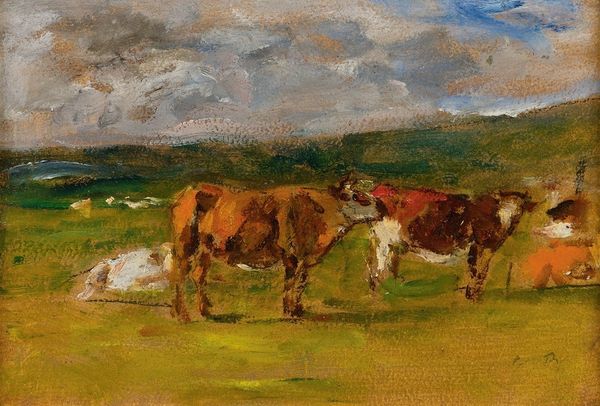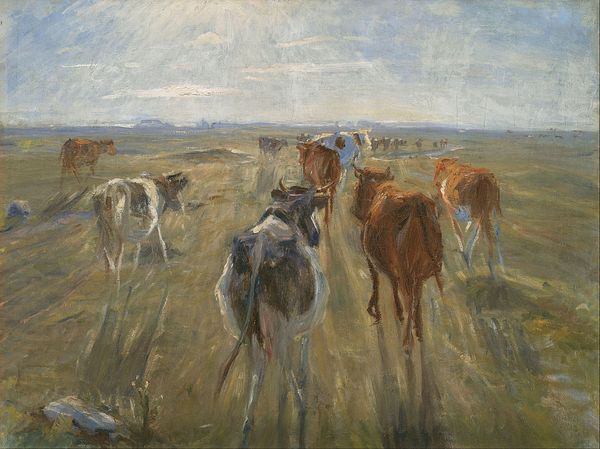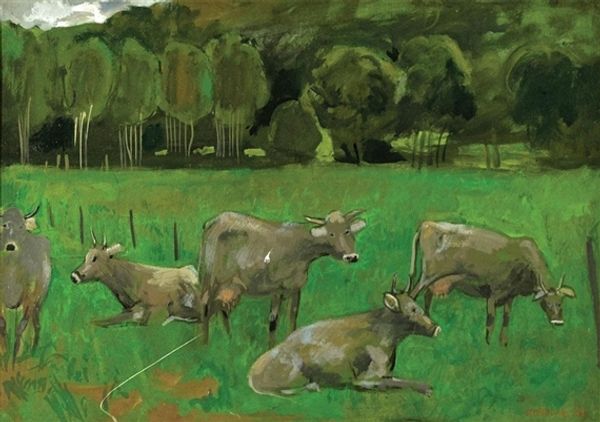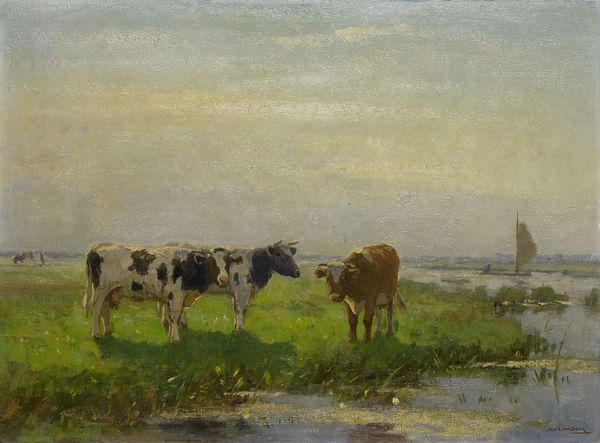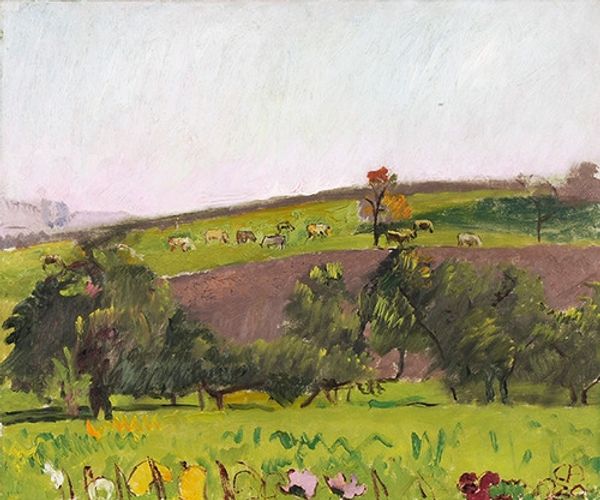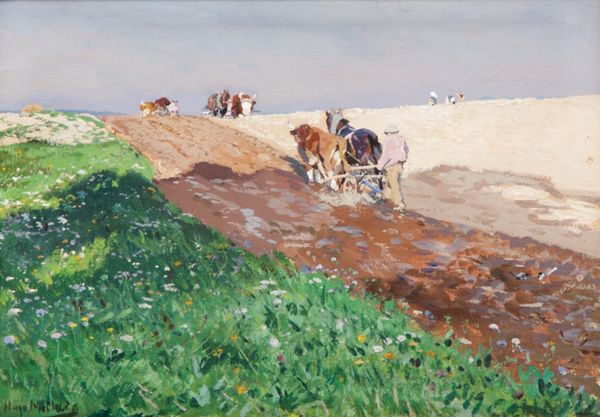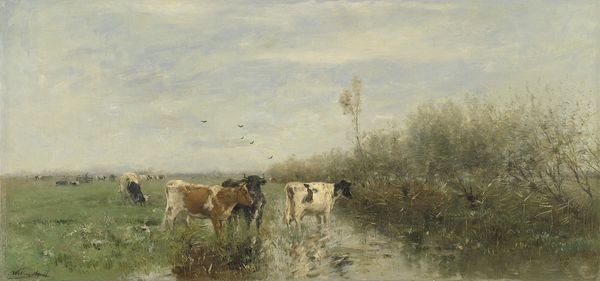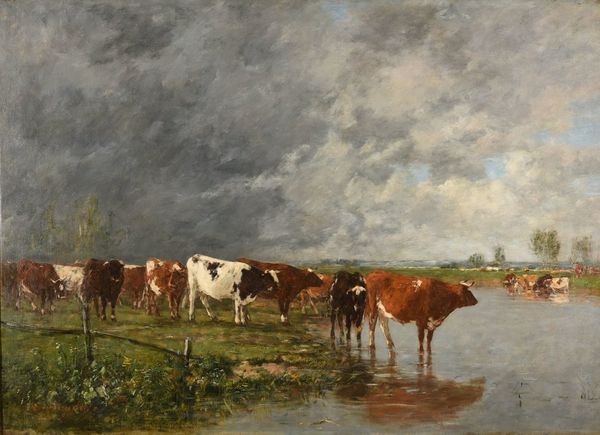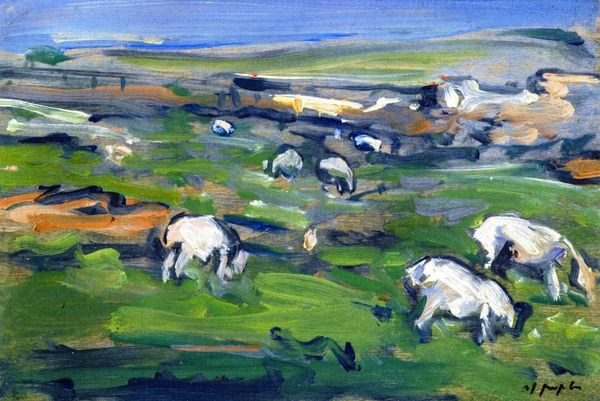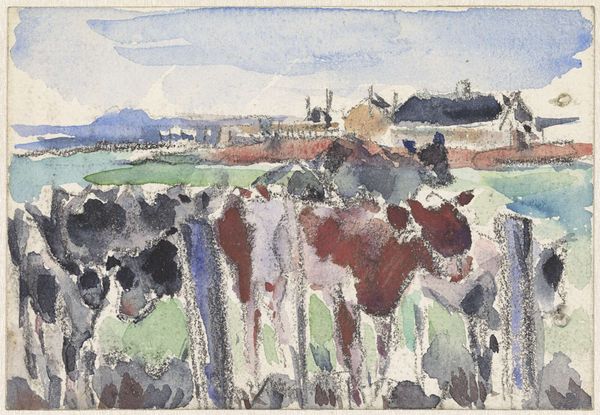
Copyright: Public Domain: Artvee
Curator: "Landscape With Group Of Five Cows," rendered around 1901-1902. It's the work of Piet Mondrian, an oil on canvas painted, quite likely, en plein air. Editor: Oh, I like this. It's unexpectedly soothing. The broad strokes of green and the lazy, reclining cows... it's almost idyllic. But there's a rawness too; it's not saccharine at all. Curator: No, definitely not. This falls within Mondrian's earlier, more impressionistic period. The loose brushwork and focus on capturing the light effects of a rural scene places it within the Dutch tradition of landscape painting, although cows grazing have certain implications as representations of land use. Editor: Land use! You're right, I wasn't thinking about the bigger picture, was I? But look at how he’s layered those greens, and even flecks of yellow in the lower half, they are just dancing. There’s almost an abstract quality even at this stage of his work. Curator: Precisely. Mondrian used those familiar scenes to explore pure painting. He was engaged with the Theosophical movement that certainly influenced his turn to abstraction. Look how the composition and those familiar elements will eventually give way to pure geometrical form. Editor: So, these placid cows are on a journey... a quest for geometric purity! Makes you wonder what they're contemplating, out there in the field of existential angst, ha! Still though, what I like is that it holds both realism and abstraction within its planes and shadows. Curator: Exactly. And it is crucial to see it. At the turn of the century, these were increasingly popular landscapes: signs of wealth, but also signs of national belonging and rural pride. The cows are central to those notions of the good life tied to land ownership and its connection to national progress. Editor: Wow, now I feel a whole new level to this work, more somber. So the artist’s seemingly benign choices and rendering in turn, became the fodder to launch future social theories. Funny how something so visually quiet can contain so many social ideas, but art does speak. Curator: Absolutely. A painting like this invites us to see the history not just within art itself but how a rural idyll connects us to the historical transformation of landscape painting and land use. Editor: Well, I am all about seeing things on more than one plane or dimension! Thank you!
Comments
No comments
Be the first to comment and join the conversation on the ultimate creative platform.
